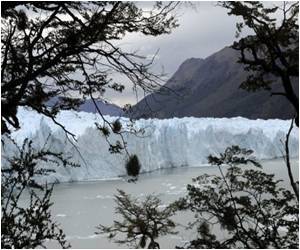
But the researchers noted that sea ice in the Arctic has melted at a much faster rate than it has expanded in the Southern Ocean.
The study revealed that from 1978 to 2010 the total extent of sea ice surrounding Antarctica in the Southern Ocean grew by roughly 6,600 square miles every year, an area larger than the state of Connecticut. And previous research by the same researchers indicates that this rate of increase has recently accelerated, up from an average rate of almost 4,300 square miles per year from 1978 to 2006.
"There's been an overall increase in the sea ice cover in the Antarctic, which is the opposite of what is happening in the Arctic," said lead author Claire Parkinson, a climate scientist with NASA's Goddard Space Flight Center, Greenbelt, Md.
"However, this growth rate is not nearly as large as the decrease in the Arctic," Parkinson stated.
The Earth's poles have very different geographies. The Arctic Ocean is surrounded by North America, Greenland and Eurasia. These large landmasses trap most of the sea ice, which builds up and retreats with each yearly freeze-and-melt cycle. But a large fraction of the older, thicker Arctic sea ice has disappeared over the last three decades. The shrinking summer ice cover has exposed dark ocean water that absorbs sunlight and warms up, leading to more ice loss.
Advertisement
Using passive-microwave data from NASA's Nimbus 7 satellite and several Department of Defense meteorological satellites, Parkinson and colleague Don Cavalieri showed that sea ice changes were not uniform around Antarctica.
Advertisement
Parkinson and Cavalieri said that the mixed pattern of ice growth and ice loss around the Southern Ocean could be due to changes in atmospheric circulation. Recent research points at the depleted ozone layer over Antarctica as a possible culprit.
This year's winter Antarctic sea ice maximum extent, reached two weeks after the Arctic Ocean's ice cap experienced an all-time summertime low, was a record high for the satellite era of 7.49 million square miles, about 193,000 square miles more than its average maximum extent for the last three decades.
The Antarctic minimum extents, which are reached in the midst of the Antarctic summer, in February, have also slightly increased to 1.33 million square miles in 2012, or around 251,000 square miles more than the average minimum extent since 1979.
The numbers for the southernmost ocean, however, pale in comparison with the rates at which the Arctic has been losing sea ice - the extent of the ice cover of the Arctic Ocean in September 2012 was 1.32 million square miles below the average September extent from 1979 to 2000. The lost ice area is equivalent to roughly two Alaskas.
Source-ANI









